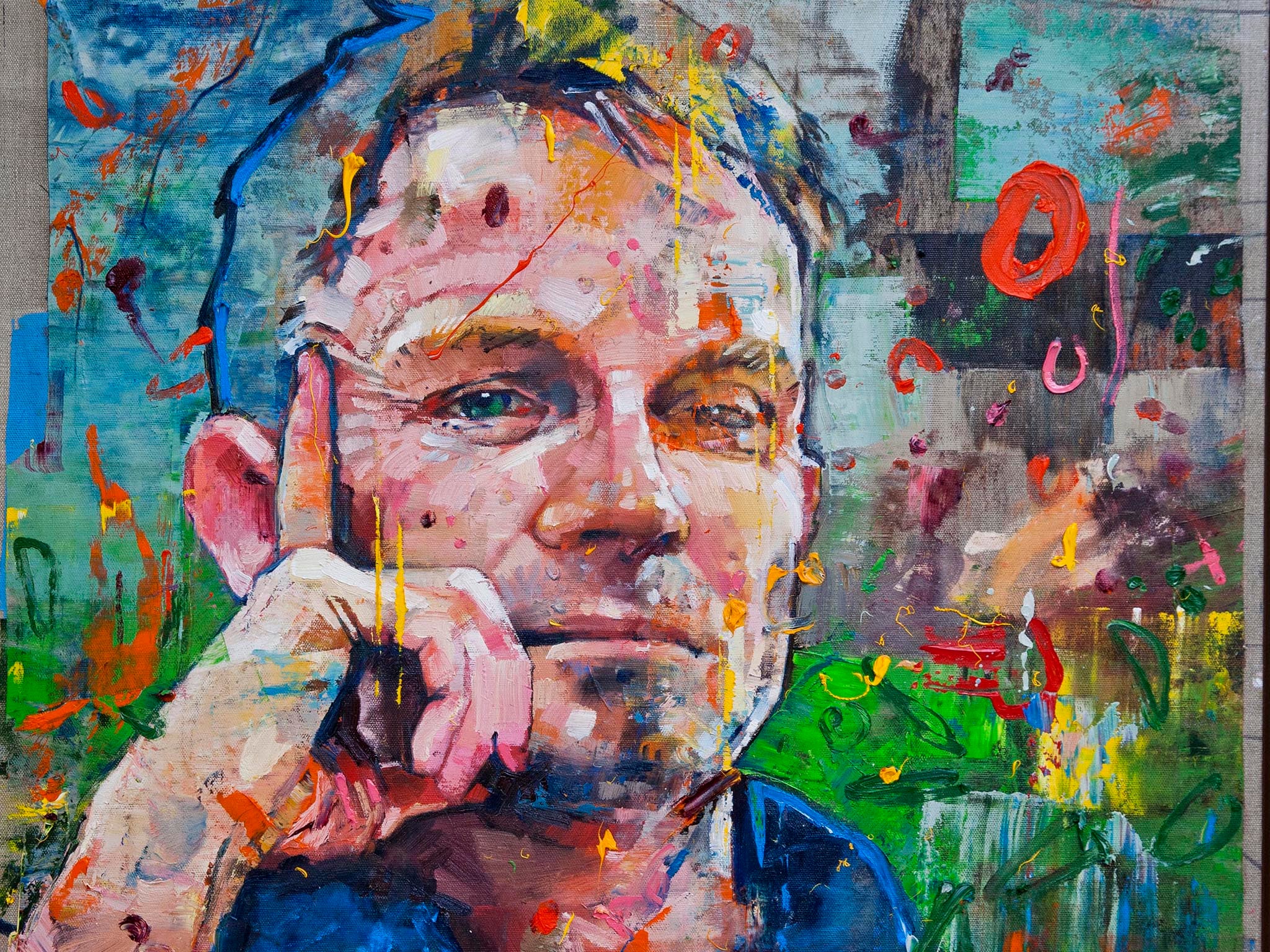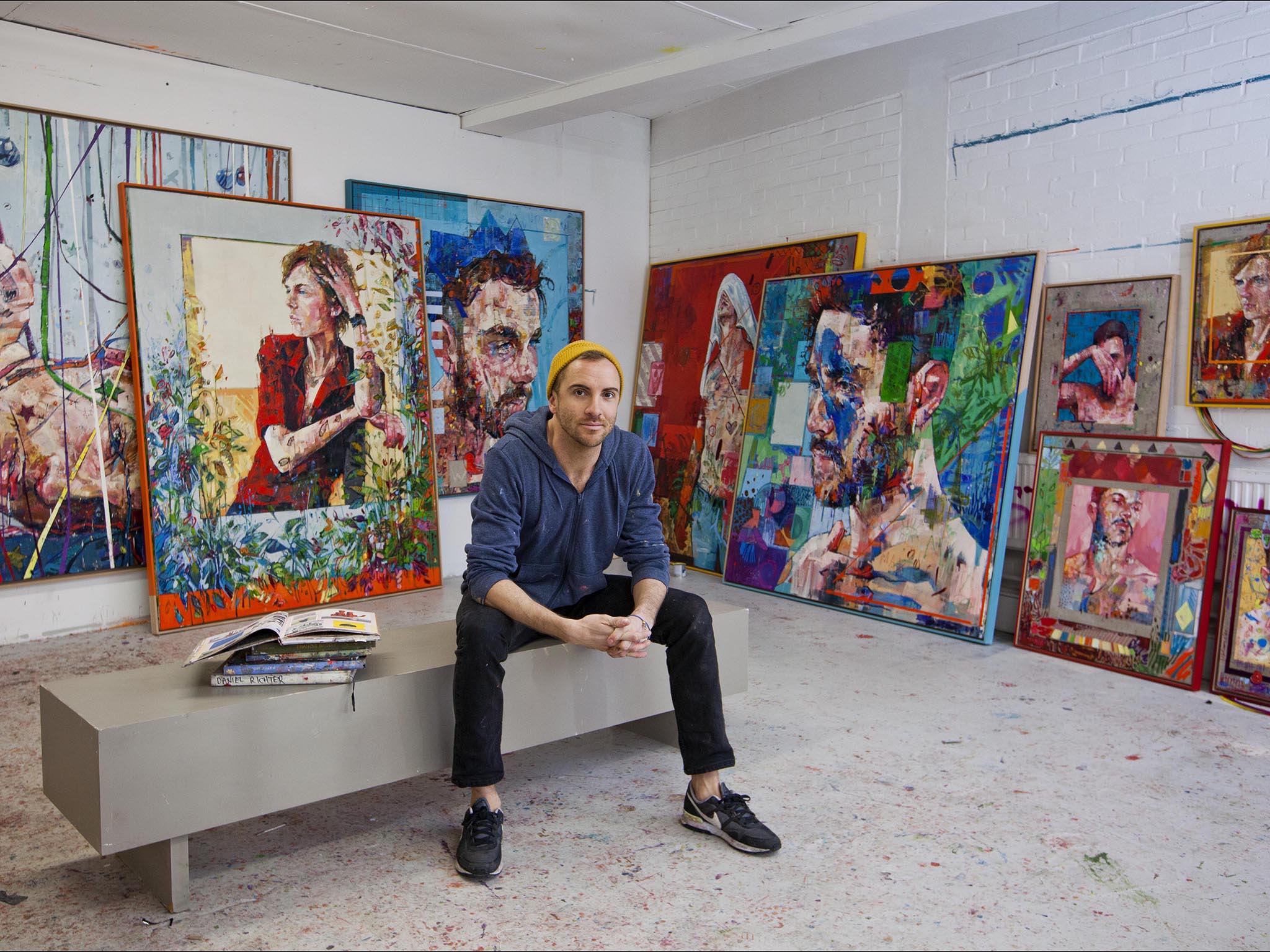In the era of selfies and Instagram, what is the point of the portrait?
'When I sat for a painting by artist Andrew Salgado, I realised a life-long dream - and the experience was both surprising and disconcerting'

Your support helps us to tell the story
From reproductive rights to climate change to Big Tech, The Independent is on the ground when the story is developing. Whether it's investigating the financials of Elon Musk's pro-Trump PAC or producing our latest documentary, 'The A Word', which shines a light on the American women fighting for reproductive rights, we know how important it is to parse out the facts from the messaging.
At such a critical moment in US history, we need reporters on the ground. Your donation allows us to keep sending journalists to speak to both sides of the story.
The Independent is trusted by Americans across the entire political spectrum. And unlike many other quality news outlets, we choose not to lock Americans out of our reporting and analysis with paywalls. We believe quality journalism should be available to everyone, paid for by those who can afford it.
Your support makes all the difference.I stand back and look at the image on the wall. As a painting I love it; it’s beautiful, vibrant, and arresting. But as a portrait it’s difficult to react without thinking about how accurately it reflects what I look like. I can’t help noticing that my blond hair, probably my defining physical characteristic, only really features as a suggestion. So the man I’m looking at is me, but at the same time not me. In which case, who is he?
I’ve always wanted to have my portrait painted, something I assumed to be motivated by vanity. But in this age of digital photography we have access to much easier ways of flattering our narcissism; we can take an infinite number of selfies on our mobile phones before choosing the one we like best and polishing it up with a carefully selected Instagram filter. Gone are the days when people would go to the trouble of sitting for a portrait just to make themselves look good. So in the era of the selfie, what is the point of the portrait?
The artist I’m hoping will help me answer that question is 32-year-old Canadian Andrew Salgado. I first met Andrew in 2011 when I was working as the arts correspondent on Channel 4 News. He’s a brilliant painter, whose work is confident and colourful, and radiates with an intense, vital energy. He’s currently creating a body of work to be shown next month at the Art Basel fair in Miami and I persuaded him to add an extra painting to the series so that I could fulfil my dream – and write about it for The Independent on Sunday.
Two months ago I travelled to his studio in east London, instructed only to wear clothes that made me feel comfortable. Andrew had already told me that he paints from photos rather than a traditional series of sittings. Even so, I was excited; the process of modelling for a portrait is something that’s been heavily romanticised, elevated to the level of the almost spiritual.
Not that Andrew, like many contemporary artists, chooses to identify as a portrait artist per se. “I see myself as a figurative artist who uses the language of abstraction,” he told me. “With what I do there’s lots more layering and lots more texture than in traditional portraiture. I explore ideas about paint, ideas surrounding what happens in the studio, ideas about identity. But when I took on commissioned work I found I was just doing a very straightforward representation of someone that I probably didn’t want to paint in the first place.” Although Andrew regularly painted to commission in his twenties “to pay the bills”, now that his own work is more commercially successful he avoids this as much as possible.
Andrew’s attitude towards portraiture is representative of a wider trend in the art world; the genre is often considered lightweight because it’s something many artists over the years have done to give them enough money to be able to create the work they really want to make (Goya for example is celebrated more for his Black Paintings and “Disasters of War” series than he is for the portraits currently on show at the National Gallery). Because it’s typically done to commission, it’s also been tainted by assumptions that the artist is trying to flatter the sitter and this is a reputation it still hasn’t quite shaken off, despite the critical acclaim accorded to portrait painters over the centuries from Hans Holbein and Thomas Gainsborough to contemporary artists such as Jenny Saville and, of course, the late Lucian Freud.

I can’t help thinking that portraiture might also lack prestige because it’s more accessible than abstract or conceptual art; someone with little interest in art might still be expected to emotionally connect with the characters and stories represented in portraiture. As a subject, I’m certainly hoping my character will play a big part in the piece. But if Andrew isn’t a traditional portrait artist, how much is it even relevant?
“I think the paintings are very little about the people who are in them,” he laughs. “I think they’re all about me. I see myself as a vampire because I bring people in and I take what I need from them and then I get rid of them!”
As he begins taking a series of photos of me, he explains that he often doesn’t know what he’s looking for at the start of the process so, as he snaps away, he first sizes up the face of the subject purely for shapes and lines. He admits this can seem “cold and clinical, like a bad hook-up”. And his appraisal of me is much more blunt than the reactions I’ve elicited on any date, even some of the worst ones. “Your face is boxy and your lines are wide and angular,” he tells me. “You’ve got a broad jaw and a broad nose and strong ears, a really strong brow.” I persevere, reminding myself this isn’t about vanity.
For the next hour, he bounces around me with a camera, directing me to strike different poses and project different expressions. Although I’m relaxed, I can tell from the frown on his face that he still hasn’t taken a photo he wants to work with. It’s only when I look at the camera straight-on that he has what he later describes as a Eureka moment. “With some of the subjects we’re supposed to buy into the fantasy that they don’t know they’re in a painting,” he explains. “But you and I are very aware that we’re doing this painting and it’s going to be accompanied by an editorial piece. And so as we stumbled through it I thought, ‘Maybe you have to be directly looking at the viewer with a very knowing expression’.”
Once he’s finished, he explains that when I leave the studio he’ll select the image that will be the basis for the work, draw it on to a canvas, then begin painting it. He usually only aims for a superficial knowledge of his sitter so that this can give way to his imagined understanding of their character as he works on the painting. I realize I’ve been investing the experience with some kind of spiritual significance, but my spirit’s about to be painted out. I try not to worry. Surely the fact that Andrew already knows me more than superficially will mean my character will have to be reflected in the painting?
Six weeks later I return to the studio to view the finished piece and am delighted; it’s serious yet playful and I feel instantly drawn in by my own gaze. But, when Andrew talks to me about the subject in the third person, I realize that I was wrong to think that any of my character will have influenced the painting. “I had to try to dislodge myself from what I know about you,” he tells me, “and let it be just about the marks on the canvas.”
He explains that he’s happy with the finished painting and how it fits into the body of work he’s creating for Miami. “It’s almost like the appendix to the show,” he says. “I like that the subject’s really engaged with the viewer. He’s the only one that seems to know that he’s in a painting. He makes me think about the Wizard of Oz behind his magic curtain.” It’s this understanding which has inspired him to call the painting The Narrator.
After I’ve left, my portrait will be wrapped up and shipped off to Miami, where it’ll be sold to a private collector. I might never see it again – or have any idea how other people respond to it. And that’s when it dawns on me just how little control I’ve had over the whole process. In a world in which we can curate how others see and understand us on social media, the act of surrendering this control feels invested with so much significance.
But it’s only by doing this that I’ve been able to help create something with more artistic merit than the average Instagram image. For me, the fact that we’ve all created and viewed so many of these means any value they had has plummeted and the value of any kind of image that has been produced via less instant means has risen. And it’s this thought that finally reveals to me why I wanted to have my portrait painted; to help create something that will endure long after I’ve gone.
So, far from rendering the portrait irrelevant, the selfie has actually given it new meaning and purpose, I think. Art critics may have spent 150 years discussing how photography is killing the painting but many of them haven’t realized that it’s actually thrown into relief what’s so special about the medium. As Andrew says, the act of painting is passionate, tactile and sensuous. And in posing for him I’m proud to know that I’ve made my own tiny contribution to the ongoing history of portraiture.
Matt Cain’s latest novel, ‘Nothing But Trouble’, is published by Pan Macmillan. Andrew Salgado is represented by Beers Contemporary in London
Join our commenting forum
Join thought-provoking conversations, follow other Independent readers and see their replies
Comments